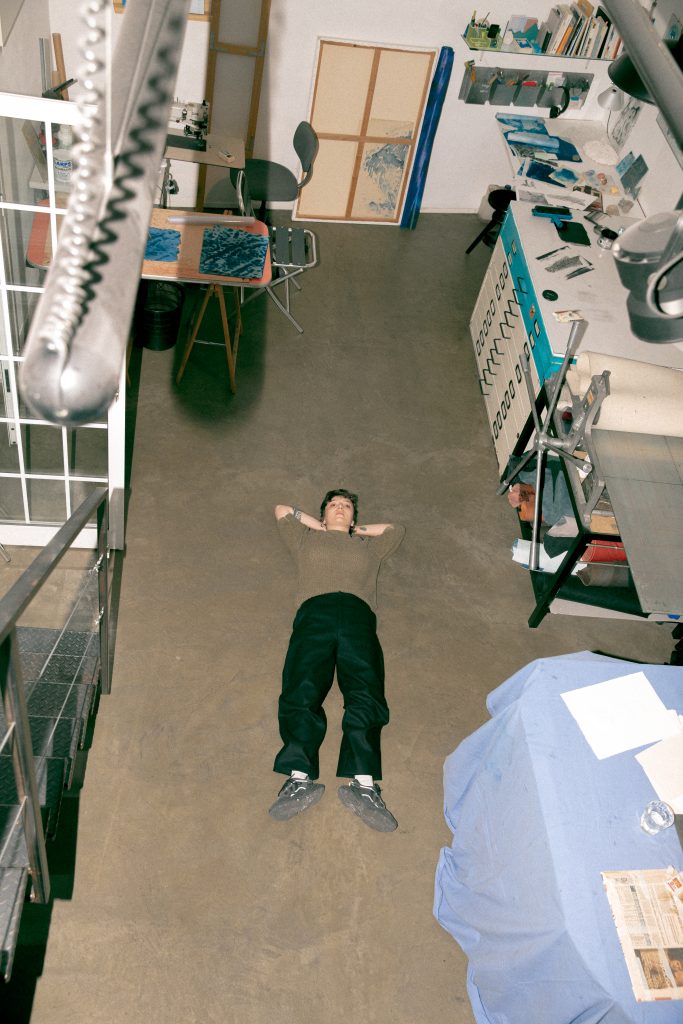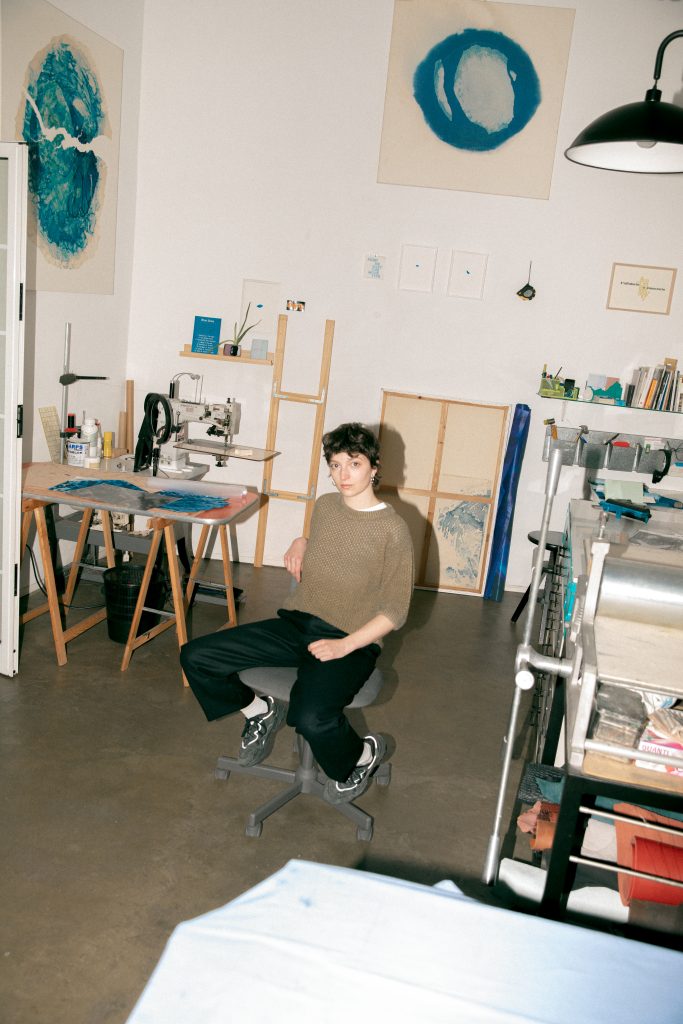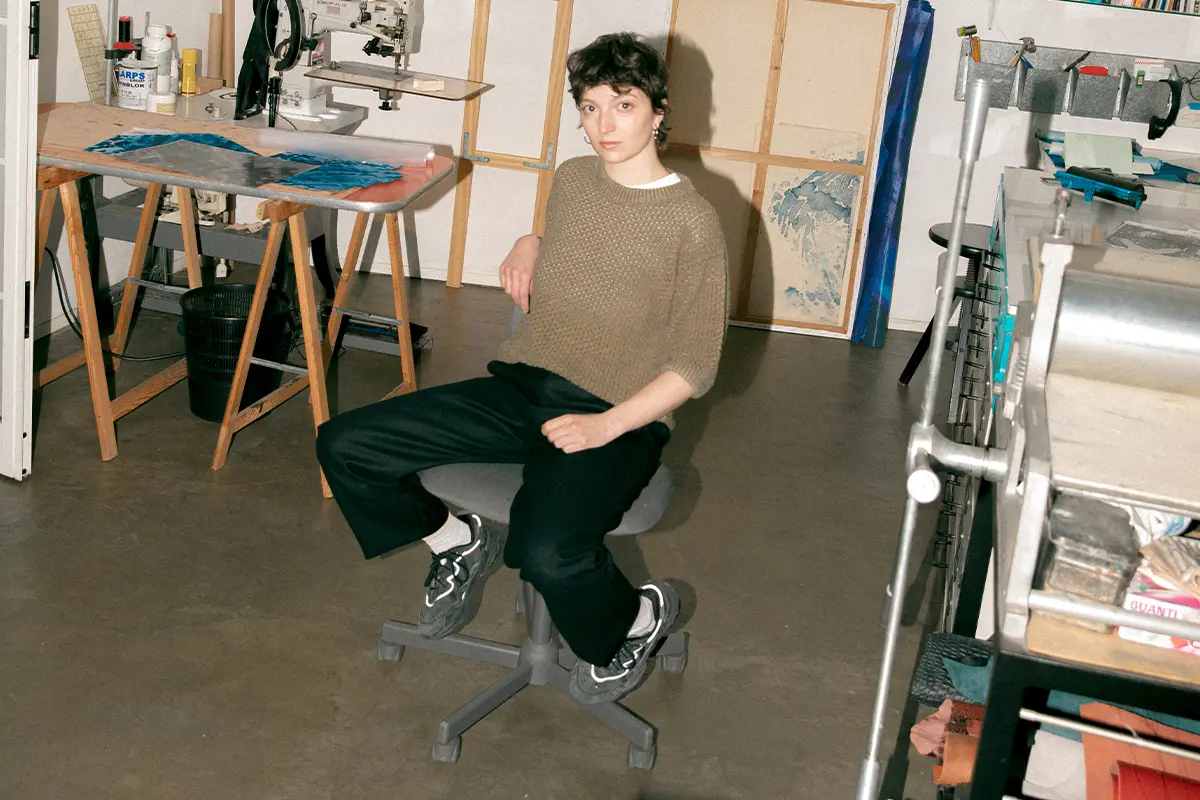«It can become a concept of above and below, of visible and invisible, of natural and artificial». Observing the gap in between and the threshold in creation
Virginia Dal Magro – Can’t Find You There, No location available
Looking for traces and undefined margins, Virginia Dal Magro came into the art slowly, following painting and graphic studies. Now a professor at the Academy of Fine Arts of Brera in Milan, she works on creating spaces for emerging artists that look to test the boundaries of galleries. With spazioSerra, a non-profit exhibition space in the Milan railway station Lancetti, Virginia allows the work to confront everyday passersby’s.
With work such as Can’t Find You There or No location available, the artist curates space research of how its representation through maps and linear distances can remain mysterious and poetic. Her approach is led by each work, experimenting with different techniques and mediums. If emerging as a rhetorical question, each work is sincere through its investigation.
Virginia Dal Magro’s imaginary
Maria Hristina Agut
What are your thoughts on the role that images have nowadays?
Virginia Dal Magro
They have a role of opening in the sense of suggestion. They are used slightly as a closure at the moment, in the sense that there are so many images that there isn’t room for the imagination to create one’s own imaginary. My attempt and in my opinion the potential that the image still has, in addition to that of representation, is precisely that of going beyond, suggesting possible new visuals that do not yet exist.

a collaboration with Spazio Serra
Maria Hristina Agut
How did your collaboration with Spazio Serra begin, and what is it like working with a non-profit exhibition space?
Virginia Dal Magro
The collaboration started while I was at the academy when one of my professors told me about this opportunity, about this disused space in the Lancetti station, and there the idea was immediately born to go and insert art in a context where art is neither contemplated nor usually requested, at least in Milan. I found the idea of using an uninhabited, invisible space, creating the opposite, giving it visibility, and giving suggestions in an environment dedicated to passing through, where people don’t usually linger. The challenge was about being able to make people stop for a second and change their routine through something unexpected on the one hand, and on the other, giving space for emerging artists like me, to confront the public, to confront the city, outside the space of the classic gallery environment.
Dal Magro: a contribution without a commercial or artistic motive
Maria Hristina Agut
Have you had any feedback on your works that made you think about the impact they have in these less obvious spaces?
Virginia Dal Magro
I have never exhibited my work in Spazio Serra because I manage it quite the other way around, to give opportunities to others, but I have happened to exhibit in other exhibition spaces, places in railway stations, I have exhibited in Porta Venezia, in Garibaldi and even now there is a permanent work in Dateo station. I’ve had a lot of feedback, and the chance encounters with perhaps people you know from other contexts, who pass by the station and see your work, is also pleasant, just as this quick fruition of the work is a test to the degree of what it can be the message that your work manages to send.
In an environment where you stop for two seconds, see an image, and move on, knowing that someone has stopped to look at your work is one of the best moments and it is one of the reasons why I like not only creating my work but exhibiting it in unusual contexts. What motivates my work is being able to bring a contribution to people without a commercial or artistic motive. Having your creations there without you, however, experiencing it with the public and with the city.
Virginia Dal Magro’s research process
Maria Hristina Agut
What leads to your research process when developing your art?
Virginia Dal Magro
I usually leave things a bit to rest and then see what the result is perhaps of a sensation or a thought. Sometimes they start from a book, sometimes they start from a very abstract sensation, and sometimes they start from a reflection on a topic that can be of any nature. In reality, my work, even if it is not political, very often also starts from social, and political reflections, and then I find my way of abstracting them and trying to translate what is perhaps the feeling that a certain context leaves.
The threshold of the untraceable
Maria Hristina Agut
What about your latest works and this threshold of the untraceable?
Virginia Dal Magro
For a couple of years, my work has been very linked to the idea of place and environment, therefore it is an extremely site-specific work, above all not necessarily at an installation level but at a research level. I like to use the space where I exhibit or where I would like to exhibit as a pretext. I would analyze and choose a place that can be a room, can be a country, then look for all this background of theoretical research and sensations that I want to communicate and I’m going to see where I find them in that place. In this way, it can become a concept of above and below, of visible and invisible, of natural and artificial. Based on what I find in the place where I would like to place my work I am going to expand that research.

I Can Barely Hear You, I Can Barely See You, I Can Barely Touch You
Maria Hristina Agut
I Can Barely Feel You is one of the latest works you exposed. What message does it underline?
Virginia Dal Magro
A project I’ve been working on for the last few years is the I Can Barely series – I Can Barely Hear You, I Can Barely See You, I Can Barely Touch You – and it’s a whole series of projects in which I try to translate precisely the missing sensations, the gray areas, which I want to try to expand through the use of both natural and sensational elements, like the correspondence between opposite poles of the earth’s axis, or the inability to touch a work. This is a series that I care a lot about precisely because through it I try to translate something that on the one hand is untranslatable and on the other hand scares me a lot because I am an extremely pragmatic person.
Italo Calvino’s American Lessons
Maria Hristina Agut
Is there a work you feel most represented by, that has a particular meaning in your path?
Virginia Dal Magro
I read Calvino’s American Lessons, a book that guided my artistic and personal research. I wanted to be able to condense all the knowledge, everything that book had given me into a single page so that I could see it every day.
Therefore I did this job during the quarantine, eventually not respecting the challenge for myself (saying that I wouldn’t create during that time), but I did this work where I went through a soft wax engraving technique, tracing each page going to bring back all the reading marks I had made on the book, all the underlinings, all the notes, all the arrows, everything that had been relevant to me about that reading. Beyond the personal aspect, it also speaks of all that is the study, the creation, and also the honesty of the work. For me, there is a whole matter of data and research that makes me take responsibility for exposing it and occupying the time of others.
Destra, poi la terza a sinistra, subito dopo il ponte (2019)
Maria Hristina Agut
Destra, poi la terza a sinistra, subito dopo il ponte is also a meaningful work that shows your fascination with traces
Virginia Dal Magro
It is site-specific work for the Veronesi Foundation, dealing with research. L’Oréal commissioned me to do a work asking me to follow the theme of wrinkles. I decided to apply what is instead my poetics, my artistic research, going to amplify what is a sensation without being too literal. I started thinking about the wrinkle as a trace, as a map, also because it is what translates it best for me. What fascinates me about maps is that they are constantly changing, so there is no way to completely stop them.
In reality, the moment a map is drawn, the world has already changed and therefore there is this continuous rush to want to trace it, to want to map it, to want to know it. I went to create these cutout wrinkles of these women who have had breast cancer wanting to create imaginary but extremely detailed maps, constantly changing. The idea was to create the idea of the clouds turning and the map changing.
mediums and techniques – Virginia Dal Magro
Maria Hristina Agut
Can you tell me more about your ability to work with different mediums and techniques, how does it affect your work?
Virginia Dal Magro
For me engraving, art printing, everything is connected to a ritual, both in terms of honesty and my attitude. I started as a painter, but I lost a lot in painting. I’m in a hurry to finish sometimes or I can’t find my way of regulating myself within the painting. So I’ve always used techniques that have their timing or strict rules to respect.
I found myself very comfortable with engraving precisely because of this almost performative ritual in its way of creating the image through a matrix. I also happened to work a lot with sculpture, recently I’ve also worked a lot with 3D printing. The technique is never a means to create the work for me but it is an integral part of the work, it has its voice and must be in chorus with the message I want to send.
Virginia Dal Magro on the performative part of art
Maria Hristina Agut
Have you done any work approaching the performative part of art?
Virginia Dal Magro
It is not my way of expressing myself because I like being behind the scenes. For me, it is the object that has the performative charge. However, of necessity, I did a performance in September in a village in Umbria wanting to create a dialogue with the people of the village who would come to see the exhibition. I placed myself on a balcony, creating this dialogue that usually exists in the villages, that of the people who are observed and who cannot fully see what you see from above.
I osculated this balcony covering it all with semi-transparent paper and I started trying to spy on the people, trying to paint them. I couldn’t see them, I could only glimpse them. I had to get very close, going to create a gray area in which I didn’t know what people saw from the outside and I didn’t know if what I saw and painted were only suggestions or if it was the real world. And I loved it, it was very scary. I truly admire those who manage to put their body and their person at the forefront of performance. It was a strong experience.
Virginia Dal Magro
Virginia Dal Magro,1994, Milan. Currently working as a professor at the Academy of Fine Arts of Brera in Milan, where she obtained her 1st level degree in Painting in 2016 and her 2nd level degree in Graphic Arts in 2019, she is part of spazioSERRA, a non profit exhibition space located in Lancetti railway station in Milan.
Editorial curated by Spring Studios for Lampoon
Photography Clara Borrelli
Production @Spring Studios
Creative Director Anouk Jans @Spring Studios
Sr Art Director Simone Lorusso @Spring Studios
Producer Carlotta Cannata @Spring Studios
Videomaker Andrea Dal Martello @Spring Studios
Styling Giulia Parenti
Grooming Francesca Rezzola



















